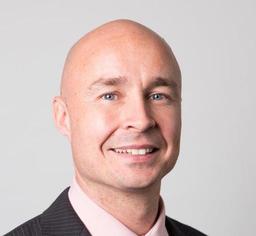A disciplinary hearing against a Calgary chiropractor who treated patients without wearing a mask has become a forum under oath to debate the efficacy of masking to reduce the spread of COVID-19.
Following the witness testimonies, when Wall expressed his wish to release the transcripts of the testimonies to the public, the ACAC attempted legal action to stop their publication prior to the tribunal’s decision. However, the tribunal allowed the publication, while redacting some of the participants’ names.
In testimony last September, the ACAC’s witness identified himself as a public health and family physician.
In his expert report to the tribunal, the doctor wrote, “There is an overwhelming body of evidence supporting the use of masking in health care settings to reduce COVID transmission.” He also claimed, “There are no known harms associated with masking.”
Mask Mandates’ ‘Social and Political Aspect’
A medical doctor and respirologist testified as a witness for Wall in November. He said that during the SARS-CoV-1 outbreak in 2003, patients at risk in isolated rooms were the only ones masked, and that SARS-CoV-2, the virus that causes COVID-19, has “a lot of similar properties” to the original SARS.
He also noted that there is a lack of “firm evidence saying conclusively that masking worked or that they justify the measures that have been in place.” When asked if he believes masks work to stop COVID transmission, he said that “if we go completely by results-based assessment, [then] definitely you can say, no.” Mask mandates for the general public have been driven by “a social and political aspect … causing mass paranoia and fear and panic,” he said.
He said masks can’t stop any aerosol spread of the virus. “It’s like a cloud, so unless you seal any mask airtight, it’s just going to seep around the masks.” The virus that causes COVID-19 measures 0.1 micron in diameter, he said, while according to his expert report, the N95 mask “is rated to block up to 95 percent of particles measuring 0.3 microns or bigger.”
Masking Requirements ‘Alarming’
An occupational health and safety consultant, who teaches courses on fitting and testing respirators and has clientele in the military, health care, educational institutions, and private industry, also testified for Wall in November. He said he found public masking requirements “beyond strange” and “alarming.”The expert said that in normal occupational settings, mask-wearers would be screened “to determine their suitability or ability to be able to wear a mask and stay healthy.” But under COVID, “there’s no screening anymore—it’s just wear one or else, and that’s never happened before.” He said general mask mandates are akin to “Russian roulette” for the public, and especially difficult for those with chronic obstructive pulmonary disease, heart conditions, lung conditions, or high blood pressure.
A “fit test” also “should be paramount [and] primary,” he added. “Without an airtight seal, there’s no way that it can provide any respiratory protection.” He called N95 masks “breathing barriers … [that] were never designed for hour-upon-hour use.”
He said Alberta work safety standards limit allowable carbon dioxide levels in indoor air to 1,000 parts per million. He said his own testing confirms academic research showing exposure to 5,000 to 10,000 parts per million of carbon dioxide within one minute of wearing an N95 mask, rising to 20,000 after two minutes. Ensuing symptoms could include headache, nausea, dizziness, a lack of coordination, impaired hearing or vision, overheating, or feeling faint.
‘A Bad Flu’

A professor of viral immunology at the University of Guelph, testified for Wall in January. He said the infection fatality rate for COVID-19 at the end of 2020 was approximately 0.15 percent. He likened this 99.85 percent survival rate to “a bad flu season,” but said survival rates for the current Omicron variant were even better.
The professor said masking is appropriate for the sick but inappropriate for asymptomatic people. He said only a bombardment of the virus could infect someone else to the point of sickness. So unless someone is sick enough to be coughing and sneezing, they probably won’t infect anyone else. He also said most people handle their masks so much it increases the chances of spreading the virus on contact.
Wall’s fourth witness, whose name was redacted, is an infectious disease specialist who has prepared nine expert reports on COVID-19 in five provinces. The reports found that “the difference between symptomatic transmission and asymptomatic transmission was about 25 times,” he said.
The witness, who is also a medical microbiologist, pointed to a “cluster-randomized trial” of over 300,000 persons in Bangladesh. The study found that villages where everyone wore a surgical mask had an infection rate of 0.67 and villages where no one wore a mask had an infection rate of 0.76 percent.
Extrapolating these percentages to Alberta’s approximately 1,100 regulated chiropractors means that if every one of them wore a mask for eight weeks, it would only prevent one infection, the witness said.
The tribunal, consisting of a chair and four members, will hear closing arguments on April 11–12 before reaching a decision.





